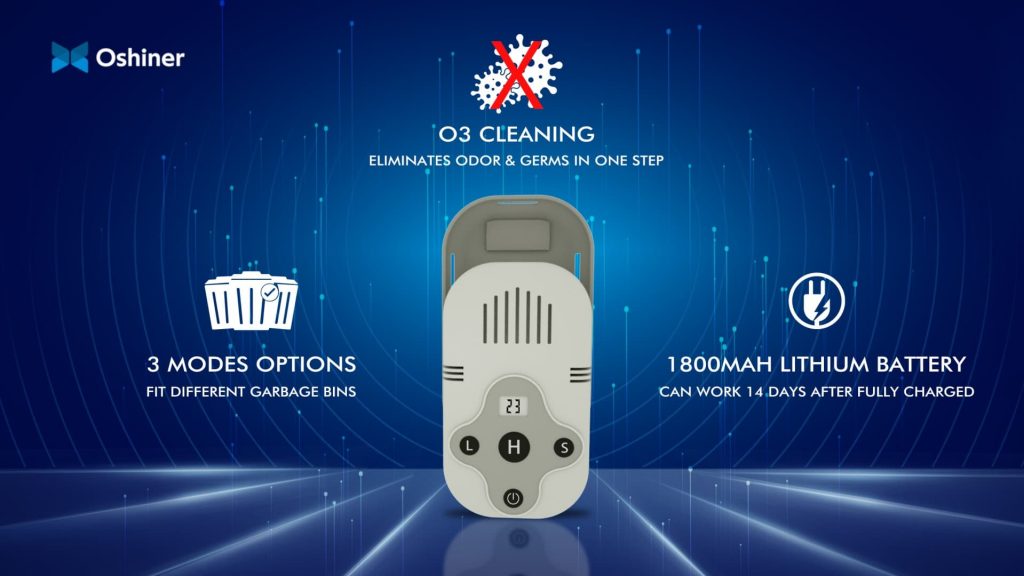The kitchen is the cornerstone of many homes. It is very common to have an entire house built with the kitchen as it’s centerpiece. And what is inside almost all of these focal kitchens? Food, cooking utensils, cutlery, pots and pans, plates, bowls, spoons, cups, you know, common kitchen things. And inevitably either hidden or right in the open, there is almost always a garbage can.
Trash can be a wide variety of things, whether it is compost, recycle or waste, over time or almost immediately, things start to stink. With so many other things in the house, nothing quite smells like garbage. For many people, their reality is to just put up with the smell and or unsightly thing until it becomes full enough or big enough to be put with other smelly things in bigger places.

But, when broken down and understood, there are systems and businesses in place that their sole purpose is to handle our trash efficiently. So why can’t we do the same about the odors in our homes? Maybe we don’t have to just put up with the smell! The unpleasant sight is also fixable, but let’s just focus on the smells for now.
Rancid Odors
First, let’s break it down. Why does my garbage smell so bad? The unpleasantness of odors could be caused by a plethora of factors and culprits. Whether a bad smell has a single or combination of sources, the main stink-maker is bacteria. Bacteria is all around us, and nearly impossible to escape.
They are inside of all animals, including humans, on our skin, on the surfaces we touch and things we use. Bacteria are living single cell organisms, looking for a place to feed and reproduce. There are good bacteria (like the ones inside of our tummies,) and bad or foreign to us bacteria, like the kinds that make us sick. This is why we should all try to keep a clean as possible living environment in order to maintain a healthy life.
Unfortunately, trash and waste are also necessary in life, but that doesn’t mean we can’t fight back against the stinking bacteria retroactively. After all, why not? For example, decomposing food scraps, litter, dust, anything just causing a stink? Why not try Ozone?
Ozone on Odors
No, not ozone from the sky technically. A much more purer, controlled source of produced on-demand ozone whenever and where ever you need it to “control” the stink-causing bacteria. The smells produced by the bacteria are often a byproduct of the bacteria feeding and multiplying, causing chemical compounds that are able to be observed by an animal’s (and human’s) sense of smell.
So far, it’s all fairly straight forward. Disrupt the production of bacteria, goodbye smells. After all, we do this for other things already. For example when we get sweaty, we shower or clean off the bacteria to smell better. When milk gets left in the fridge past it’s expiry date, we take the milk and dispose of it. If done carefully, this will get rid of that old-milk smell. Similar ideology can work with odors by removing or eliminating the bacteria in our trash.
But why ozone?
Ozone, or O3 is a great sterilizer and is able to eliminate 99.99% of bacteria almost instantly on direct contact, and is able to continue to do so over an extended period of time or as needed.
Ozone on Bacteria
These germs and viruses living all around us have the potential to make us sick in one way or another. Whether the germs make their way somehow onto counter-tops, open containers, come in direct contact with food, or are just floating through the air, we must all be cautious about what we put in our bodies and keeping the environment clean to reduce risk of infection.
So, how does ozone eliminate bacteria and viruses? Ozone, containing three oxygen atoms, is an extremely unstable molecule. This means that ozone doesn’t want to stay in that state, it would much rather be O2, or normal breathing oxygen which is much more stable. In order for O3 to change into O2, ozone needs to ‘pass over’ one oxygen atom to another compound or organism. When a compound gains an extra oxygen atom, it changes the compound enough to throw off the equilibrium of the bacteria, virus, odor, or fungi so that it dies off and can no longer multiply or spread.
Ozone Simplicity
The concept of disinfecting with ozone may seem like an intimidating endeavour at first, but in reality, it is quite easy. Relatively speaking, disinfecting with ozone can be much more simple than using other more commonly used cleaning produces. Instead of the hassle of buying, storing, replacing, and protecting yourself from most cleaning products themselves, cleaning with ozone is a much more straight-forward experience.
It is as simple as stick it, press start and done! Like mentioned before, ozone is produced by changing normal breathing air into ozone using a high-voltage current. Once the ozone is produced, it goes straight to work, disinfecting whatever it comes in contact with. Good quality household ozone disinfectors also have a built-in timer that will automatically turn off the device after a predetermined time, to ensure that it is only working when you what it to.

Conclusion
Taking into consideration the health effects that bad bacteria has on the body, something needs to be done to fight back against these sick-making bacteria that literally stink. And also considering how easy it is to clean the messiest, hardest-to-reach areas by a stick and click of a button, ozone seems to be the perfect solution to having clean, disinfected trash. Disinfecting with ozone has many more applications, making it your greatest weapon against fungi, viruses, pathogens, bacteria and stink. When cleaning in your home, clean with ozone.


